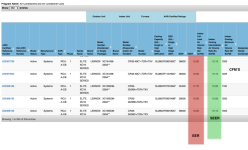Sigarms
Super Star Member
As far as buying off the net without warranty. I wouldn't worry about it much, as long as you can buy parts from a wholesaler in your area and perform the work.
If you get the system dry (deep vacuum), purge with nitrogen when brazing the line set, Keeping critical areas cool while brazing, you shouldn't have any major issues.
Heck, I have installed units one week and the condenser fan motor go out the next week. These were GE motors.
It wasn't an install issue, just a mechanical failure of the motor. Mechanical things fail. it's just the way it is
I didn't realize the OP lived in Washington state, on a Peninsula outside of Seattle of all places. I've worked From Massachusetts down to Alamaba in HVAC, and I've done training with guys from Seattle on the business side. Let's just say that California and Washington state seem to be a world in all their own when it comes to the HVAC industry, particularly on price. I tried to help a local NC licensed contractor out who was going to do a job for his daughter in Spokane, and I feel over dead on the shipping costs alone.
Keep in mind, it's because of California that manufacturers no longer manufacture a PSE motor gas furnace, and I haven't met a HVAC manufacturer yet who doesn't bite their tongue when they speak of California. Have no doubt that California played a part in discontinuing R410A (back around 2009, go figure).
As Utrarunner stated, he's found AC costly in Washington State. I can believe him.
Tractor Seebea, I shot you a PM.

